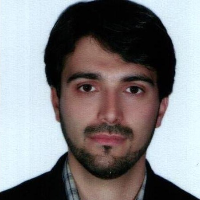Laboratory Evaluation of Mixing and the Final Concentration of Curves Falling of superficial Jet Stream under the Effect of the Convergence Angle
Nowadays, environmental pollution, especially water pollution, is rising as a consequence of advances in technology and raise in life standards. Since the environmental contaminants cause different kinds of problems, it has drawn the majority of scientist and politician’s attention to itself. Industrial, agricultural and house hold pollutions are increasing due to the human activities holding modern technology in advanced countries. Since water is the most vital and essential stuff for living things, it is highly essential to keep it from contamination. According to the purposes of the study, in the current step, the physical model was built in the S.C.U.O.A hydraulic laboratory. Therefore, the parameters are presented dimensionless. The experiments were performed to measure the trajectory centerline concentration at 15, 30 and 60 g/lit concentrations and to analyze the dispersion limits at 5, 8 and 15 mm diameters at 15, 30 and 90 convergence angles. The model is consisting of: 1. Water supply and pumping system 2. Jet injection reservoir and mixture pump to homogenize the jet fluid 3. Experiments on flume and jet injection pump 4. Fluid conveyance system 5. Drainage system equipments 6. The jet setup at various convergence angles at initial 5, 8 and 15 mm diameters. The equipments needed for various parameters measurement include accurate flowmeter for the jet flow discharge measurement [0.2 percent accuracy], portable digital EC meter [0.1 microsimence/cmAccuracy] to determine the EC, flume water and reservoir Nacl instantaneous temperature. Additionally, at every 15 cm, an accurate ruler at 1 mm accuracy and 1 meter height was vertically attached. Linear rulers printed on transparent greaseproof paper were attached on the body of the flume. During the experiments, receiving fluid is conducted to the flume through pump and supply reservoir and it fills the flume at a certain height. The jet flow is discharged into the receiving fluid surface exiting in laboratory flume through the injection reservoir relevant pump and the jet circular nozzles subsequently. A ceratain volume of salt was conducted the jec flow injection reservoir which was cube-shaped. A water solver colorful material was used to determine the Nacl direction through the receiving fluid. The jet fluid density was measured standardized by buoyancy method calculations and laboratory measurements by mean of a 151H accurate hydrometer. When the trajectory was completed, the data were read from the rulers and photos were photographed by canon camera, model hs50SX, simultaneously. To make sure the measurements accuracy, both data and photographs were compared. In this part, we render our findings dense flow by means of circular superficial jet affected by the convergence angle. The flow centerline concentration was measured through trajectory by digital EC meter and salinity concentration relation. The dense flow superficial discharge, outlet flow progress by momentum horizontal force and buoyancy vertical force at receiving area. At the primary segment of the flow, on account of the momentum force velocity, the flux will be horizontal and adjacent to the water surface. As its impact force reduces, the jet flow progress velocity decreases. In this case, the buoyancy force overcomes the momentum force and flow is no longer adjacent to the water surface and turns to a submerged state. As the jet nozzle angle increases, the momentum force which makes the flow to progress increases. It makes the jet flow move and doesn’t allow dispersing and displacing the salt particles and receiving fluid moleculy. According to the results, 90 degrees possesses the most concentration. At this angle, the flow lines momentum is maximum due to sudden shock to convergence angle which initially causes the proportion of centerline concentration at an equal situation for every three angles to be maximum at 90 degrees. As the buoyancy force increases, the curve decreases and leads to the flow diffusion which itself decreases the centerline concentration of the curve. Finally, the concentration degree will be equaled for every three angles at the impact point and it approaches to receiving flow concentration. The experimental data analysis showed that the dense fluid concentration increase from 15 to 60 g/lit increases the concentration by 52 percent through trajectory centerline. Also the concentration through the trajectory centerline increased to 27.5 percent by mean of contraction angle change from 15 to 30 degrees. While contraction angle increases from 15 to 90 degrees, the concentration through trajectory centerline increased to 73 percent. Statistical comparison of the data showed that the concentration through trajectory centerline increase from 30 to 15 kg/m3 reduces 12.5 percent and concentration through trajectory centerline increase from 60 to 15 kg/m3, reduces 37.7 percent , during the advance of stream profiles.
- حق عضویت دریافتی صرف حمایت از نشریات عضو و نگهداری، تکمیل و توسعه مگیران میشود.
- پرداخت حق اشتراک و دانلود مقالات اجازه بازنشر آن در سایر رسانههای چاپی و دیجیتال را به کاربر نمیدهد.


